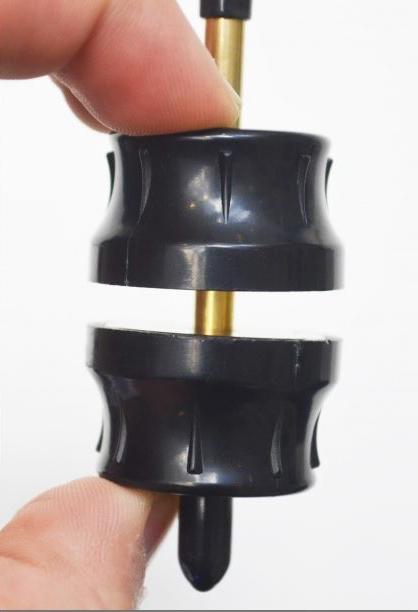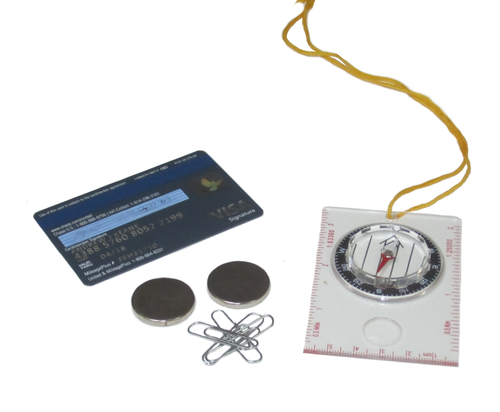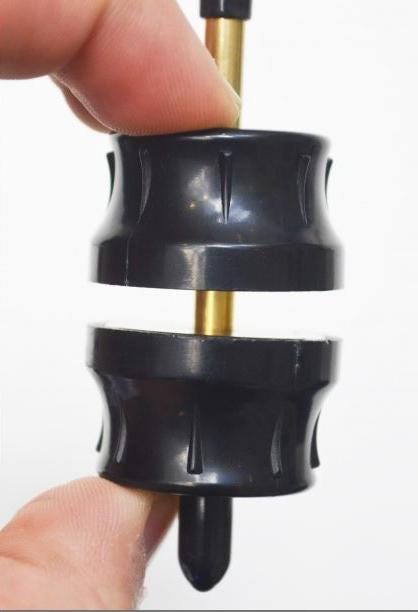Mutual Attraction: Custom-Engineered Magnets Aim to Raise Latch Performance
June 24, 2015

Conventional magnets are impossible to precisely engineer for individual applications. Their magnetic fields also threaten sensitive electronics -- a big concern in an era of electronic devices.
This is changing. Correlated Magnetics Research (CMR) of Huntsville, Ala., has developed a technology that customizes magnets by application and controls the energy they generate to protect electronics.

As a result, designers and engineers can control the power, performance, and even the feel of the CMR magnets in different parts.
Polymagnets, as CMR has branded them, are now appearing on consumer and business electronics products and in one high-profile electric car, where the magnets form an interior latch.
MORE FROM DESIGN NEWS: Fasteners Get Tinier, Tougher, and Smarter
Stephen Straus, vice president of commercialization and strategy for CMR, declined to disclose details, citing confidentiality agreements, but said one application is a smart device that uses Polymagnets to attach to a base that is part of a network configuration in the Internet of Things. The designers wanted a component that was "wireless and elegant," he said, with no fasteners.

An application that will soon be commercial is a tablet computer in which Polymagnets align with and secure the device to a cover/keyboard. The magnets do not attract the cover/keyboard to the tablet until both align. The external piece releases when moved slightly off center with little force.
On latches, the magnets can repel until they are pushed toward each other to a defined distance, at which point they attract and contact to attach. On springs, the magnets can rest at a defined distance apart from each other, repel when pushed together, and attract when pulled apart.
MORE FROM DESIGN NEWS: Innovative Fasteners Beat the Heat
CMR can tune the magnetic fields on its magnets to perform specific functions. Magnets can be tailored to resist each other at set distances. This property might be used to create a spring, or an air gap that generates low-pressure torque when one magnet rotates, moving the other.
Magnetic energy can be tailored to below 2,000 Gauss to ensure that Polymagnets do not damage electronics or erase data from the magnetic tape on credit cards. If a magnet is only 2 mm beneath the surface of a product, magnetism can be engineered to project no further.
"We control the field and function of Polymagnets," Straus said. "We can define where we put the magnetization."
The magnets are made of neodymium iron boron, a rare earth material. Central to the technology is a coil developed by the inventor of the process, Larry Fullerton, who is CMR's chief scientist.
The coil creates magnetic patterns with multiple polarities on the surface of the material. Fullerton applied his background in radar and electronic signal processing to devise patterns that allow customization of magnetic properties.
CMR will tailor magnets to specific needs. Straus said Polymagnets are cost-competitive with conventional magnets.
The magnets' energy lasts at least 10,000 years, since the rate of magnetic decay is 1% every 100 years, he said.
Pat Toensmeier has more than 30 years of experience writing for business-to-business publications. His main areas of coverage have been defense, design, manufacturing, technology and chemicals, especially plastics and composites. He has reported extensively on developments in these areas from the U.S. and Europe, and covered industry events as well in Brazil and Asia. Toensmeier has held various positions at major publishers such as the McGraw-Hill Companies and Hearst Corporation. A graduate of the University of Missouri, he is a contributing editor for several print and online publications. Toensmeier is based in suburban New Haven, Conn.
About the Author(s)
You May Also Like





